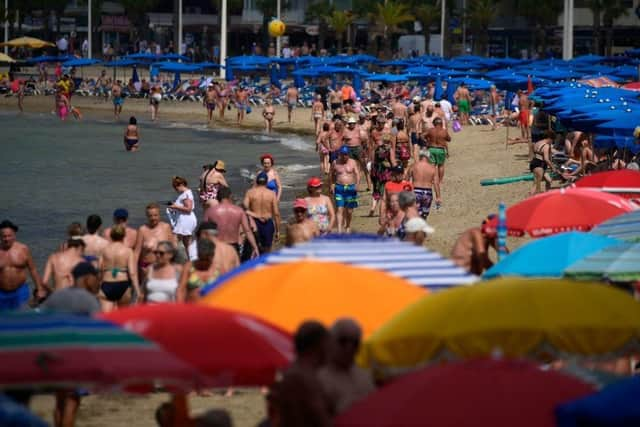International app launched to gauge level of UV exposure from sun
The app provides localised information on ultraviolet (UV) radiation levels so that users can take actions to protect prolonged, excessive UV exposure, a major cause of skin cancer and other diseases. The app allows the inclusion of national and local data streams and adaptation to multiple languages – it is currently available in Chinese, English, French, Russian, Dutch and Spanish.
The SunSmart Global UV app, which is available free of charge at both the Apple App and Google Play stores, has been launched by the World Health Organisation (WHO), the World Meteorological Organisation, the United Nations Environment Programme and the International Labour Organisation.
Advertisement
Hide AdAdvertisement
Hide AdIt provides five-day UV and weather forecasts at searchable locations. It highlights time slots when sun protection is required, with the aim of helping people around the world know when to use sun protection, in an effort to reduce the global burden of skin cancer and UV-related eye damage.


Globally, it is estimated more than 1.5 million cases of skin cancer were diagnosed in 2020. During the same period, more than 120,000 people across the world lost their lives to the disease.
One of the main factors contributing to these cancers is excess UV radiation from thinning of the earth’s stratospheric ozone layer, resulting from the release of certain manmade chemicals. Under the international treaty known as the Montreal Protocol, all UN member states are phasing out the production and consumption of those substances according to a specific timetable. As a result of these continuing efforts, the ozone level is projected to recover by mid-century. In the meantime, individuals need to protect themselves from receiving too much UV exposure.
Everyone needs some sun, mainly for the production of vitamin D, which helps to prevent the development of bone diseases such as rickets, osteomalacia and osteoporosis. However, too much sun can be dangerous.
The UV App has been launched to coincide with the first day of summer in the northern hemisphere.
Comments
Want to join the conversation? Please or to comment on this article.
